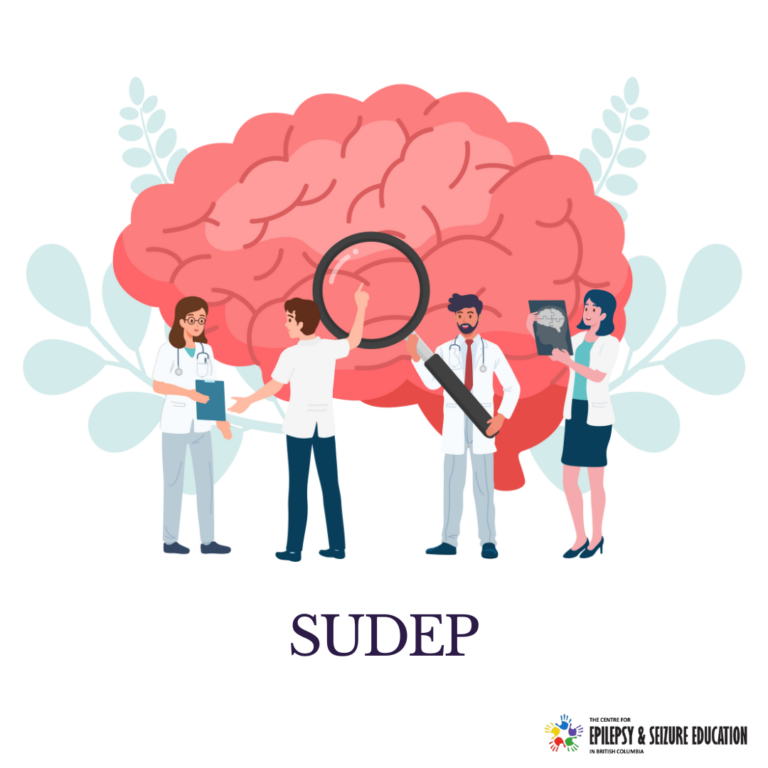What is SUDEP?
Sudden unexpected death in epilepsy occurs if a patient with epilepsy in otherwise good health dies suddenly and unexpectedly. The death occurs during normal activities and upon autopsy, no medical cause of death is found. The death is not a direct result of a seizure nor of drowning. SUDEP is associated with a history of seizures, and rarely occurs in patients with newly diagnosed epilepsy or in cases where the patient has stopped having seizures.
What Causes SUDEP?
Although SUDEP has occurred in all age groups, it is most common between the ages of 20 – 40. It occurs most often in people who have had long-standing epilepsy and poorly controlled seizures. Victims of SUDEP have a higher than average frequency of seizures per year and they tend to be generalized tonic clonic seizures. In a majority of witnessed cases of SUDEP, seizures near to the event were reported. In non-witnessed cases, likely signs of previous seizure activity were noted on post mortem examinations. Most, but not all studies that measured blood levels of anti-epileptic drugs have found sub-therapeutic levels of AEDS in the blood. The majority of cases have also been on multiple medications (polytherapy) as opposed to monotherapy. Polytherapy may be an indication of the difficulty in controlling seizures in certain cases, or it may in itself be a contributory factor by its effect on heart rhythms.

Who is at Risk for SUDEP?
No single risk factor has been found to be common to all SUDEP cases, which suggests that there may be multiple, complex causes. However, there are many recurring elements which lead researchers to suspect that irregularities of cardiac and respiratory function may be involved. Several studies have shown that during and between seizures, the part of the nervous system that regulates the orderly operation of the heart and lungs can be affected, disrupting their function and resulting in an irregular rhythm or rate of the heart or causing the patient to stop breathing. A large number of SUDEP victims are found in bed, and in a prone position, suggesting that it occurs most often during sleep and that suffocation may also be involved.
What Can Be Done to Lower the Risk of SUDEP?
The goal in reducing the risk of SUDEP is achieved through the control of seizures. SUDEP has not occurred in patients who have gone into remission nor in patients who have stopped experiencing seizures after surgery. Low AED blood levels in victims indicate a need for strict compliance on the part of the patient and monitoring on the part of the health care profession that therapeutic levels are being reached and maintained. It is important to take medications exactly as prescribed and to never miss a dose. It is equally important to notify the doctor of persistence of seizures, any change of symptoms, or the development of any side effects. Not only SUDEP, but also an increase in untoward side effects are associated with being on multiple AEDs, so seizure management under effective monotherapy should be attempted.
Because breathing difficulty has been implicated in SUDEP, caregivers need to be sure that the patient is correctly positioned onto the side during and after seizure activity. Supervision during sleep, either by sharing a room or by use of a monitor may be helpful for those in the high risk group. Breathing should be watched carefully after the seizure and stimulating the patient may help to avoid breathing stoppage.
As important as it is to reduce the risk of SUDEP, it should be remembered that SUDEP accounts for only a small percentage of deaths per year. It is equally important to eat a healthy diet, manage stress, exercise and get adequate sleep. These lifestyle measures are not only part of reducing the risk of seizures, but are part of achieving optimal health and reducing the risk of cardiovascular and pulmonary disease that affect the general population as well as those who have epilepsy.
References:
Nouri, Shahin, MD, Sudden Unexpected Death in Epilepsy, eMedicine, http://www.emedicine.com/neuro/TOPIC659.HTM#section~Clinical
Tomson, Torbjorn , et.al., Sudden unexpected death in epilepsy: Current knowledge and future directions, Lancet Neurology, 7(11), November 2008, 1021-31
SUDEP Information Links
SUDEPAware – SUDEP Aware is a charity that works tirelessly to raise awareness and understanding of Sudden Unexpected Death in Epilepsy (SUDEP) to help reduce death due to epilepsy.
SUDEPAction – SUDEP Action is dedicated to raising awareness of epilepsy risks and tackling epilepsy deaths including Sudden Unexpected Death in Epilepsy. We are the only UK charity specialized in supporting and involving people bereaved by epilepsy.
